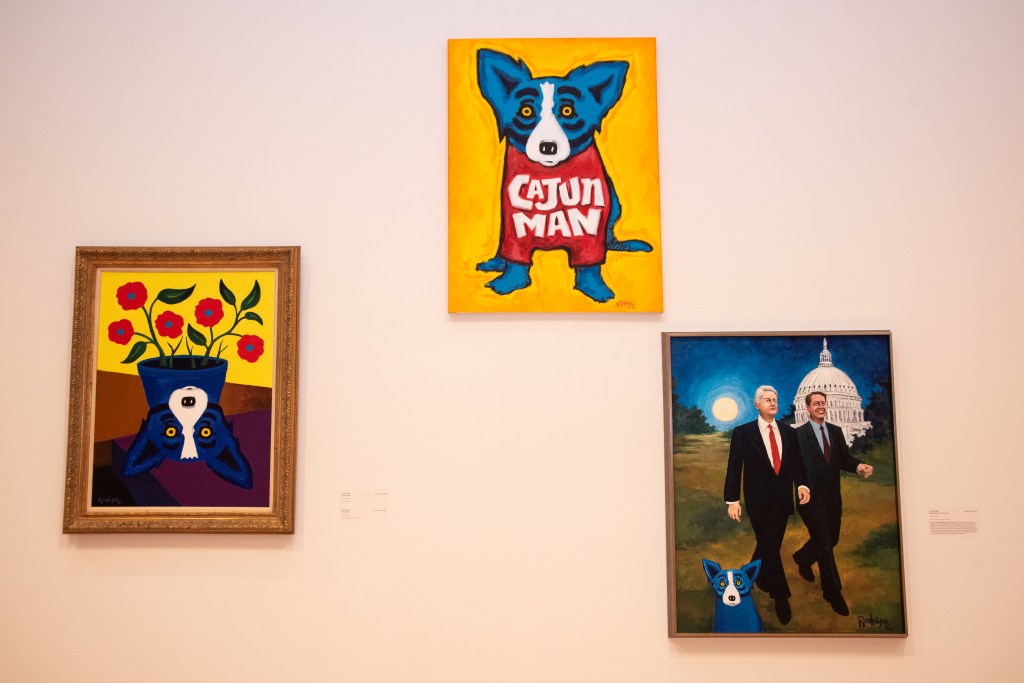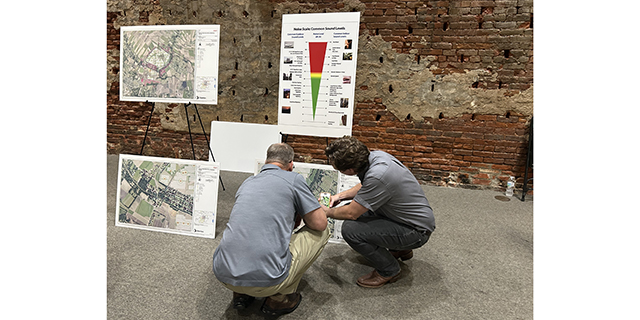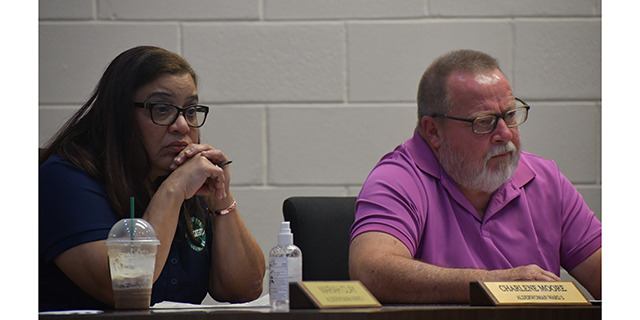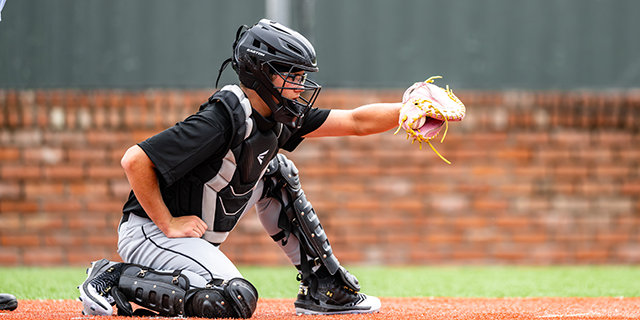The Blue Dog Turns 80
Published 8:59 pm Monday, April 8, 2024

- AP Hilliard-Rodrigue-Installation-Hannah-Louise-Photography-74.jpg
Artist Profile I Remembering George Rodrigue
The Blue Dog Turns 80
Acadiana Celebrates the iconic artist
By Andrew Comer
Last month was George Rodrigue’s 80th birthday. In celebration of the late artist’s quixotic career, two museums in Acadiana are displaying large portions of his work as well examining the arc of his life and pursuits. The first is The Hilliard Art Museum in Lafayette and the second is the Bayou Teche Museum located in Rodrigue’s city of birth, New Iberia. Driving into the southern countryside, there is a strange transition that takes place when you reach the blue-green waters of the Atchafalaya River. Suddenly, all of the sterile comforts of glass skyscrapers and flashing yellow street lamps fade away, and the mood of air is thick honey. Crossing over the Whiskey Bay Bridge, and wading through the marshes and swamps to Lafayette and then to Bayou Teche, the array of images are altogether garish, but sweet at the same time. Telephone poles drowning in the Henderson swamp, their surface dark brown and waterlogged from the lapping, mustard-colored water. Bright purple flowers and tall, Gothic oak trees blooming in the impossible heat. An old and glowing alabaster graveyard next to an iron gray electrical grid. This place seems to hide so many alluring secrets. You want to peel back the strange and gnarled surface to see what made it grin so much. Just approaching the world of George Rodrigue, you already feel very much under his influence.
The Hilliard’s exhibit, Sitting with George Rodrigue, examines the historical events and cultural perspectives that have shaped the artist. This includes his early period painting the dark and muddied shadows of the Cajun landscape, to his later and final years as an ecstatic pop artist. In displaying Rodrigue’s art chronologically in this way, one can a clearer image of the seismic change that occurred over the course of his career. In one corner of the exhibit, Rodrigue has painted the entire history of Acadian abuse and diaspora. In the other, there are mythical portraits of Drew Brees and President George W. Bush. The effect of this is to show an artist that isn’t afraid to take grand risks or paint with vibrant colors when the world is handing you gray sunsets and safety. Rodrigue it seems would rather be elusive than predictable and, by the Hilliard’s own admission, this was the gallery’s intended effect. On the wall introducing the gallery, they write:
“Whether portraying the Blue Dog’s striking yellow eyes or the dark outline of trees against the Louisiana sky, Rodrigue’s paintings have an element of mystery that is part of his enduring appeal as a storyteller”
In an incorrigible way, the lasting relevancy of Rodrigue’s artwork is precisely this juxtaposition between specificity and mystery. In his Cajun landscapes, for example, his subjects are always in full focus. But the environment is a hazy web of marsh vines and the dark tree branches that sprawl out like shadows. However, when one sees these seemingly gargoyle-ish surroundings in the foreground of such eccentric events and characters it is asstonishing to find a radiant sense of warmth coming off the canvas. It is puzzling that a work that is made up almost entirely of cypress shade and murky water can feel so joyful and optimistic. His early work can stand a double take just trying to figure out whether you should feel jovial or stoic when viewing them. The bayou landscape, peopled as it is, is a heady mixture of joy, eccentricity and darkness.
This continued to be true as his work became more modern and abstract. Since the appearance of the Blue Loup-Garou in 1984, the artist’s vision has shifted. Previously, Rodrigue only implied his mythology by hiding it in his impressions of the landscape. But with his Blue Dog series, Rodrigue would place the mythology front and center. The Blue Dog refused anymore to be ignored or simply implied. For all the years leading up to his 2013 death, Rodrigue experimented on what precisely was the dog’s place within the landscape. As time changed, so did the dog, and it would appear in dramatically different locales and costumes. It would eventually become a commentary on the shifting place of mythology in the modern world. But, even as the dog seemed to travel the world and Rodrigue’s paintings began to make sales globally, no one ever seemed to forget where the art came from. There was on each canvas an indelible water mark from the Louisiana bayou. This it would seem stemmed directly from Rodrigue’s strict philosophy on art:
“You have to find what excites you and go up. Because up there, you’re by yourself, and no one can touch you,” George Rodrigue
It is through this umbrella ideal that one can catch the most unique and consequential parts of the artist’s work. This dogmatic commitment to expressing his individual passions is what makes Rodrigue an one-of-a-kind artist. This is precisely why the Bayou Teche Museum has titled their newest exhibit George Rodrigue: Painting for Myself. In all straightforwardness, it is a rare treat for lovers of the Southern legend. Here, one can get an intimate look at the artist himself. The exhibit boasts 45-years of rarely seen paintings by Rodrigue that reveal his most personal subjects, experiments, and ambitions. There are bold ventures into sculpture, multimedia, iron-works, as well as deep into the abstract. There is even a display of his personal studio relocated directly from California and in exactly the condition that he left it in. One could already feel the sunshine that emanated from Rodrigue’s work, but it is a different dimension altogether to see the laboratory where that warmth was crafted. In addition to this, much of the work within the exhibit was provided by Rodrigue’s most frequent muse, his wife, Wendy and this story cannot be told without her. She spends her life carrying on the artistic mission of her husband. She is the founder of the Life & Legacy Foundation which focuses on education outreach and the continued exhibition of Rodrigue’s work.
“Together the exhibitions illustrate a dedicated and inspiring life in art, ranging from not only Cajuns to Blue Dogs, but also Portraiture, Hurricanes, Landscapes, Drawings, Bronzes, and Figurative,” Wendy explains. “The paintings are a perpetual reminder that, as George often said, ‘Art takes on a life of its own, long after the artist is gone.’”
Sitting with George Rodrigue will be on display at the Hilliard Museum in Lafayette until July 13th. Painting for Myself will be on display at the Bayou Teche Museum in New Iberia until April 20th.





